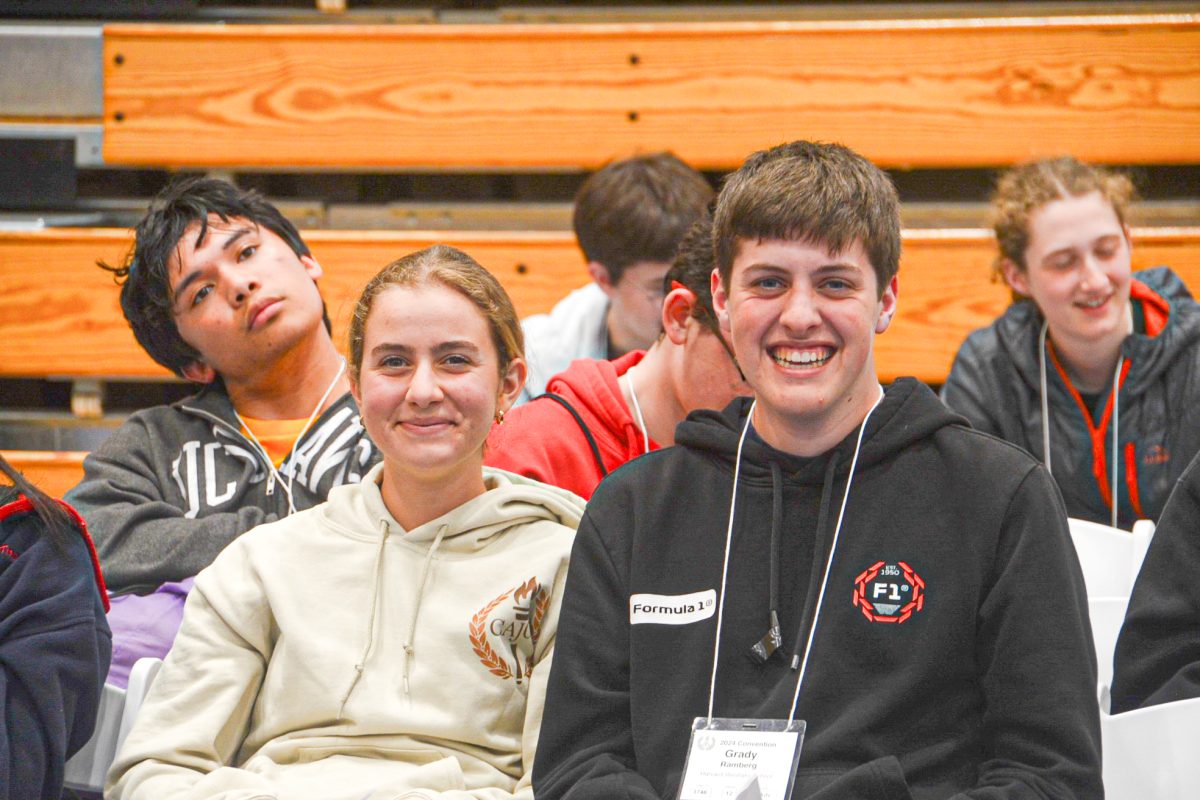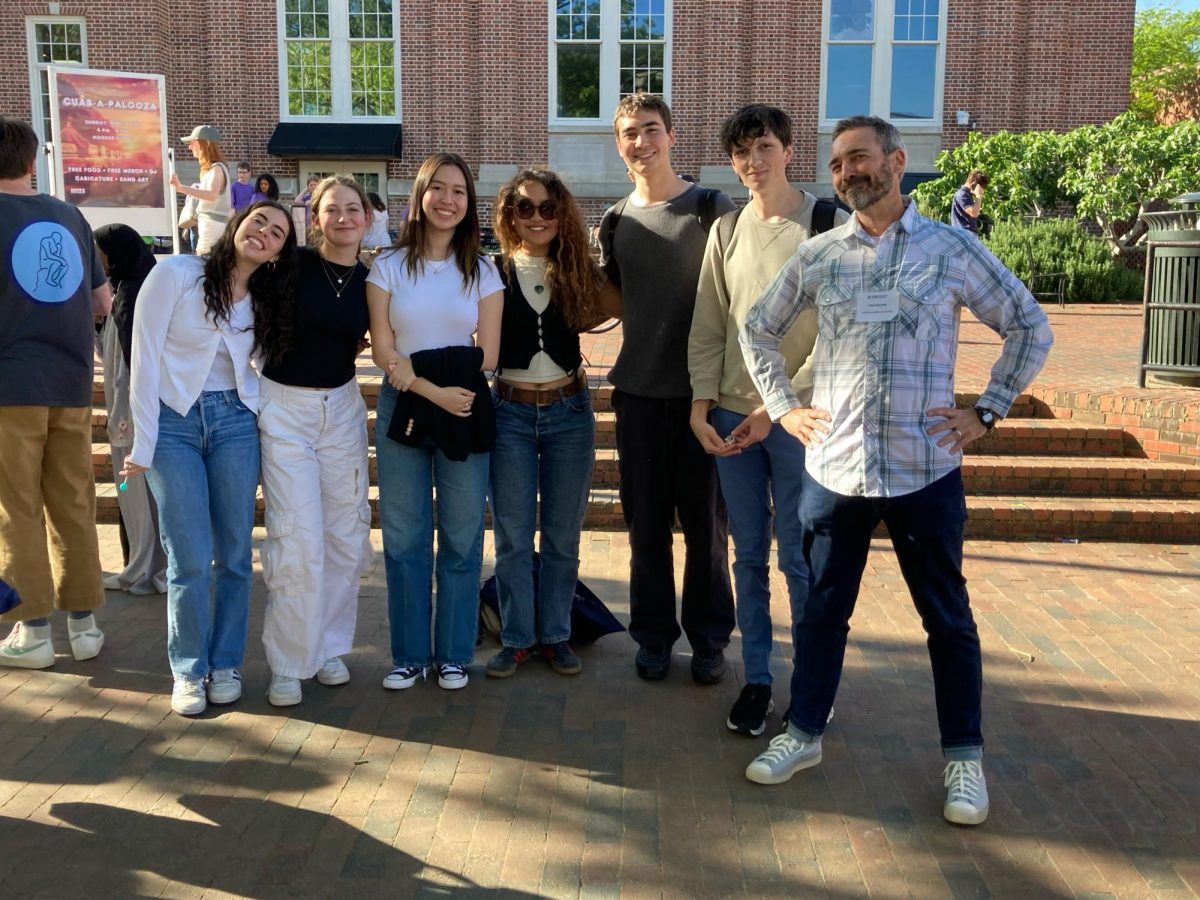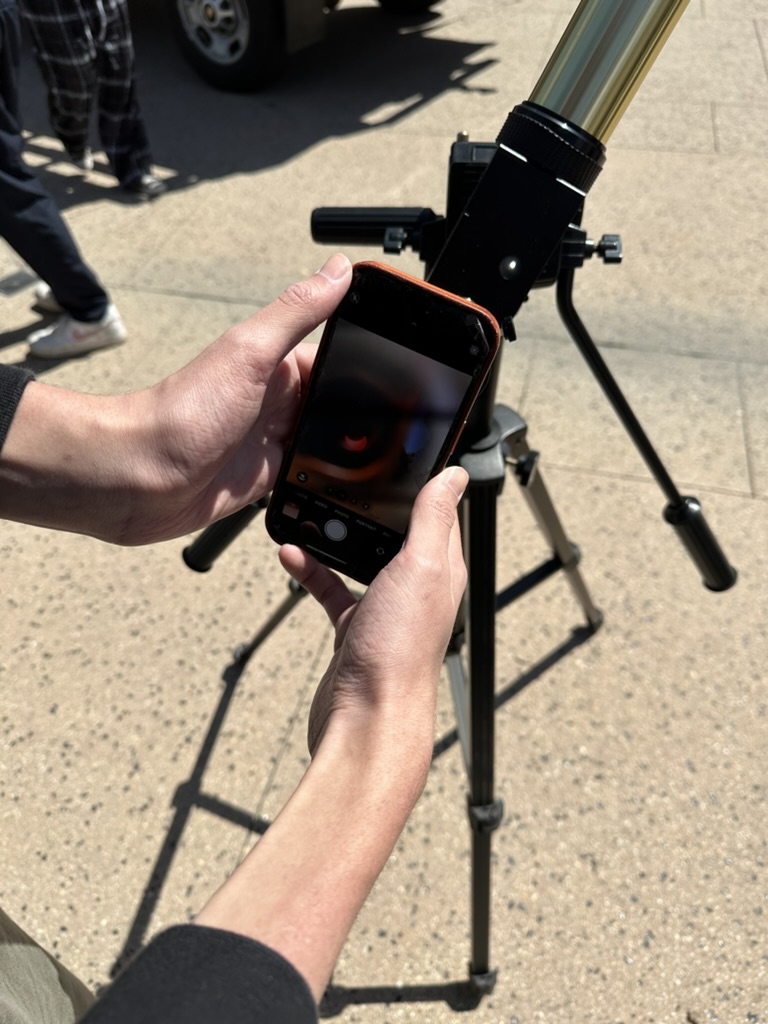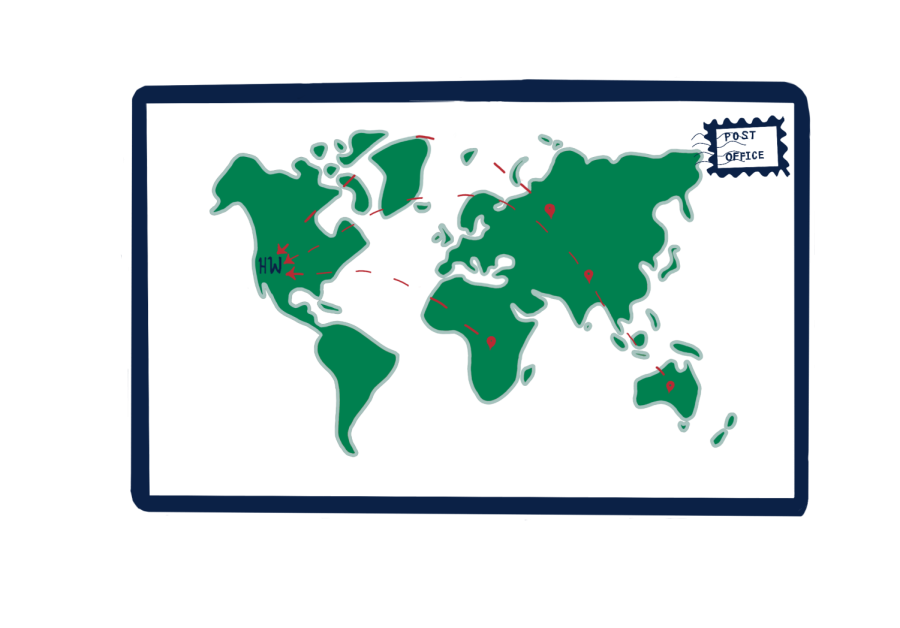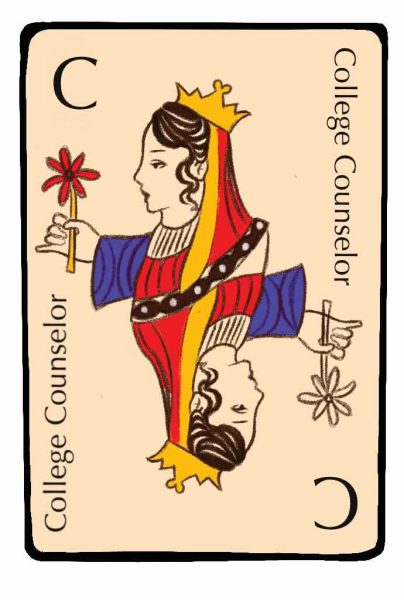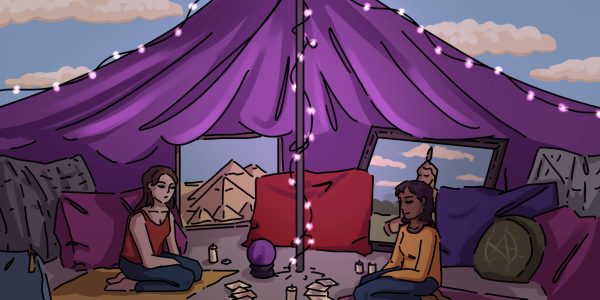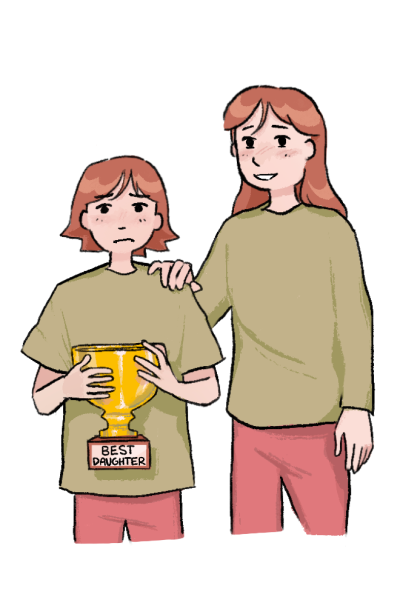New in Town
An illustration depicts a map of the world to represent the different places community members have moved from.
November 16, 2022
It was 2:30 in the morning as Claire Wu ‘24 frantically typed the Chinese translation of an English word her teacher used into her computer. Since immigrating to the United States when she was 12 years old, Wu said she often has trouble understanding the things her teacher says, an inhibitor that often causes her to fall behind.
“I don’t understand anything my teachers say in class,” Wu said. “I stay up until two or three every day trying to understand all [my school work]. It’s really bad.”
Community members reflect on struggling to find their cultural identities.
After living in the U.S. for the last four years, she said her comprehension has improved. Still, Wu said she struggles to grapple with her identity as a Chinese American student. Wu’s parents are her primary ties to traditional Chinese culture, and she said it is difficult for both of them to balance their native customs with life in America.
“I feel that I did not quite find a way to manage [both cultures],” Wu said. “It’s really hard to change, especially for my parents. They’re trying to, and I can see that. It’s still difficult for them to completely forget about what [their life] was like, or the ties they had to their culture. So I definitely understand that, but it’s just hard for me [in the middle].”
A Chronicle poll indicated that out of 30 first-generation immigrant students, 16 have experienced an internal struggle to grapple with their identity. Out of the same 30 students, 23 said American culture is the primary influence on their identity.
Manu Markman ’23 immigrated from Argentina and said adopting native mannerisms and beliefs is the best way to become successful in the country one immigrated to.
“It’s not very constructive from an immigrants perspective to move to another country and not assimilate because then you’re stuck,” Markman said. “You may as well have stayed in your home country, where you are more familiar with your surroundings and in the same frame of mind culturally. I think that if you’re going to move to another culture, in order to make the most out of that, you have to change your mannerisms and the way you talk to get the most out of that move.”
Markman, who immigrated to the United States when he was two years old, said he is strongly connected to his Argentinian roots but also feels that his connection can occasionally clash with his American identity.
“I go [to Argentina] very often,” Markman said. “I used to go there every six months, and now I go there every year or year and a half. I still follow the soccer games there and stuff. I think the case with immigrants is that we’re not one [identity] as you live more in your new home. You’re not purely in my case, Argentinian. And you’re not purely American, either.”
When Markman moved, he was surrounded by many people who had also immigrated from Argentina. Through elementary school and middle school, he said the Spanish language was still a large part of his life. Though he personally believed he should blend in as much as possible, Markman said he felt pressured by family and his environment to stick out and not assimilate and embrace his cultural roots.
“There was a time in seventh through ninth grade, where I felt more valuable [as an Argentinian],” Markman said. “I felt that my community encouraged me to reject assimilation and be overly proud of the Argentinian part [of me], something that I sort of succumbed to. Then I realized that this isn’t helping me socially, emotionally or even developmentally to alienate myself from the culture I’m living in, in order to sort of cater to what I perceived as the incentive structure and the culture.
Spanish language teacher Harold Pleitez immigrated to the United States when he was 28 after he had gone through the education system in El Salvador and earned the Salvadorian equivalent of a master’s degree. Pleitez said he felt pressure to adapt to American culture but still remained true to his background.
“I felt pressure to assimilate, but I also learned not to at the cost of losing who I am and my identity,” Pleitez said. “I felt a little shy from people [originally] because I was getting to know the culture. I was trying to read people. But, I assimilated, for example, I eat what we consider American food more than Salvadorian [food]. That doesn’t mean that I don’t appreciate Salvadorian food. It’s just that where I live, there are not many Salvadorian restaurants, and I don’t have much time to cook Salvadorian food at home.”
Students and faculty compare differences in their native cultures and America.
Though he feels that he assimilated, Pleittez said he was surprised by the emphasis on privacy in American culture, which is very different from Hispanic culture.
“American people are a very individualistic based culture,” Pleitez said. “That means that you have to respect people’s space, so you just don’t show up at a house. Hispanics don’t care as much. You just go and knock and say, ‘I’m here, and I’m coming in.’ There is not that protocol [here]. I had to learn to ask ‘Are you going to be available to hang out on this day? Or can we meet on this day, people?’ I had to learn those rules of respecting people’s space to make friends.”
Tonya Hoodyakova ‘25 moved to the United States from Russia in order to pursue her passion for ballroom dancing when she was 12. She won the national ballroom dancing championships in 2019 and earned dual citizenship in both countries when she was invited to the team.
“I got citizenship because I was invited on the U.S. national team [for ballroom dancing],” Hoodyakova said. “I originally came to New York to practice for the championships. I still lived in Russia, though. So, I have citizenship in both countries and kinda live everywhere. I’m more of a citizen of the world.”
After moving to New York, Hoodyakova moved to Miami, Florida, where she stayed until she transferred to the school. She said she still hasn’t decided whether or not she wants to return to Russia in the future, especially in light of recent global conflicts.
“It is hard to know [if I want to stay in the U.S.], but a lot of a lot of people ask me,” Hoodyakova said. “I love Moscow and my relatives and friends there. I mean, I would like to live there because I was raised there. It’s kind of my home, but I like the U.S. too because I spend a lot of time here.”
Hoodyakova said Russian education and social standards differ from America and the school.
“The culture is completely different,” Hoodyakova said. “In Russia, we are used to discipline, and when I came to the U.S., it seemed like everything was very different. I guess it’s more casual. In school, people can wear pajamas and slippers, but in Russia, that would be unacceptable, and [they] would be like kicked out of school straightaway. Everything [in Russia] is really strict compared to the U.S..”
Head of Diversity, Equity and Inclusion Janine Jones said she acknowledges the language barrier for international students and said it could look different depending on each student’s circumstances.
“I’m sure there’s a disconnect in that [students] may not have a mastery of the English language,” Jones said. “If that’s the case, the school can be a really tough environment. That is why our past standard has been to be fluent in English. As we all know, fluency looks different, there’s a level of fluency to be able to navigate the United States versus a level of fluency that would be needed in order to be academically successful at Harvard-Westlake.”
Jones said even though she appreciates what the school does for immigrants, she thinks the administration could attempt to do more to accommodate the language barrier.
“There’s a lot that we could do to open Harvard-Westlake up to students who may not have the same level of fluency around English,” Jones said. “To me, it kind of gets to the question, ‘How accessible are our materials that we give to parents?’ ‘Are we putting things in different languages?’ The Deans send out information all of the time, but if your parents don’t read English or don’t speak English very well, then that might make it more challenging to communicate with the Deans. Sometimes it even puts the student in the position of being a translator, which I know is really hard.”
Emily Silkina ‘23 is of Russian descent but lived in Hong Kong until she was 12, when she moved to the United States. Silkina said she experienced a lot of social issues with other students after she immigrated.
“I did get bullied a lot,” Silkina said. “I just didn’t know that the experience with other kids would be so different. We all had a different culture, different upbringing, and I also had like a British accent, which got me bullied.”
Students discuss how they were able to discover their dual identities since immagrating.
Although all of these individuals said they may have found difficulties in America in terms of language or cultural differences, they said they each found a way to accept themselves and fit in.
Wu said she doesn’t feel confined by choosing between cultures and embraces her Chinese culture while in America.
“At the last guest speaker event, someone asked a question on how to identify as a half-Jewish and half-black person,” Wu said. “The speaker said that he could be both. I feel like that also applies to me. So, I guess, I’ll identify myself as both [Chinese and American].”
Markman said he feels it is necessary to assimilate into American culture in order to build a healthy identity while maintaining strong cultural ties.
“I think when you move to a place, the onus is on you to assimilate and try to learn the language and immerse yourself in the culture, while making sure you stay connected to your other culture,” Markman said. “That creates a phenomenon of being in the middle. In the end, if done correctly and with intent, I think assimilation can fully Americanize you. At the same time, you’re able to incorporate [some] of your culture into your American identity and you become American plus.”
Pleitez said when he moved to the United States, he strove to achieve citizenship and initially experienced some struggles with grappling with his identity, but ultimately learned to accept his nationality and ethnicity.
“I had to find the balance between being American versus not losing my complete identity or losing Spanish because as an adult in 2016, I became an American citizen,” Pleitez said. “In terms of law, I had to renounce my nationality and any kinship to the country I came from and only accept the United States. It was so emotional, but this is what people are willing to do. It was very happy, but at the same time, there were a lot of emotions. I am American, but I am also Salvadorian. I think [this realization] came with a more mature level of understanding as an adult, which is probably different from a child who doesn’t know who he or she is yet. I knew that this is who I am, an American, but with Salvadorian roots.”

